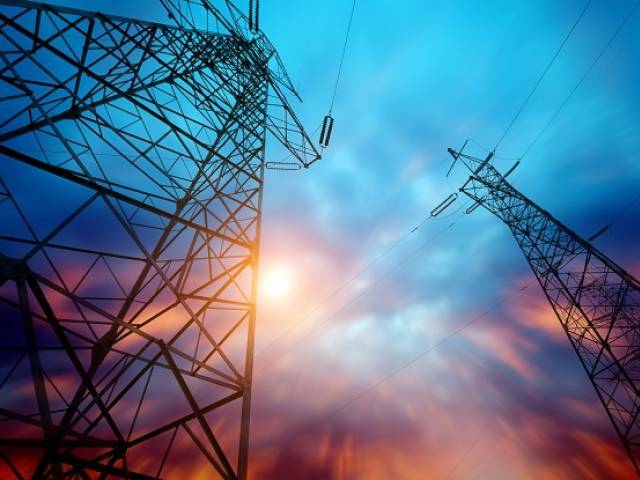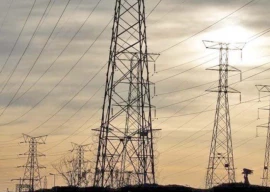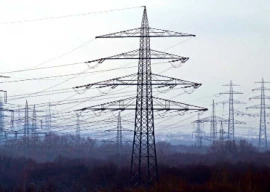
According to a recent report released by PRIME, state-owned electricity distribution companies (DISCOs) have caused a cumulative loss of Rs1,355 billion over the last five years.
This includes the loss due to failure in bill recoveries (Rs495 billion), financial loss due to transmission and distribution loss (Rs195 billion), and tariff differential subsidy (Rs708 billion) over 2016-2020.
This should not be surprising given the inefficiencies with which the distribution component of the power sector is marred with.
It has a direct bearing on under-utilisation of the electricity surplus capacity, which in turn has led to the ever-increasing circular debt and rising electricity tariffs.
Failure on the part of successive governments to take tough decisions has landed the country into this quagmire.
As the report shows, the performance of state-owned DISCOs remains unsatisfactory as they have not met National Electric Power Regulatory Authority’s (Nepra) targets for transmission and distribution (T&D) losses, bill recovery, investment and public safety.
The ultimate burden of the inefficiencies is put on the consumers. The higher cost of electricity and power outages has disrupted economic activities in the country, increased the operational cost of businesses, contributed to sluggish growth in gross domestic product (GDP), and led to a decline in the competitiveness of local industries.
In terms of T&D performance, DISCOs are found to be slightly in breach of Nepra targets, therefore, their five-year accumulated losses reached Rs195 billion.
To keep DISCOs operational, governments are forced to regularly pour in money to bail out the defaulting distribution firms in the form of tariff differential subsidy.
Public safety is a cardinal component of power sector efficiency, but DISCOs’ performance is lacking with total fatal accidents mounting to 680 in five years.
FY21 saw an increase in cases of electrocutions where 185 people lost their lives. The incidence of fatal accidents is contingent upon a number of factors such as the condition of infrastructure, population density, encroachments and planning of cities.
READ Prospects of National Electricity Plan
Although there is surplus generation capacity in the country, there is still prevalence of power outages, which manifests inefficiency. DISCOs have shown improvement in curtailing T&D losses while the performance of some companies has deteriorated as per latest Nepra report released a few days ago.
Consumers face average daily load-shedding of more than two hours in jurisdictions of various DISCOs. The indiscriminate power outages in loss-making regions are compelling the compliant citizens to look for alternative sources of uninterruptable electricity, therefore, DISCOs are drawing less power from the allocated quota.
This is further exacerbating the problem of surplus generation capacity and subsequently, the burden will fall on the narrow consumer base in the “take or pay” regime.
There are over 1.2 million pending electricity connections, which suggests a significant level of unmet demand. Delays in the provision of electricity connection put the burden of capacity payments on the narrow consumer base and prompt the government to raise tariffs.
As K-Electric example suggests, once incentives are realigned, it can be hoped that the private sector will start investing in the T&D sector.
Total investment made by K-Electric after privatisation has been $3 billion, including Rs68 billion between 2016 and 2020. It has also received a subsidy of Rs143 billion in five years.
Its financial loss from unrecovered bills and T&D losses is calculated at Rs134 billion in five years.
To promote consumer compliance in the lower-tier income groups, the company started a programme in which people could pay bills in installments.
It removed 200,000 Kundas (illegal electricity connections) in 2020 alone to curb power theft. It indicates that despite all shortcomings, K-Electric privatisation has been an overall success story.
Reforms
The government needs to move away from the business-as-usual strategy and temporary fixes, as they threaten the sustainability of power sector. Therefore, a sustainable framework is needed for power sector reforms starting with restructuring and privatisation, either partial or segment-wise, and adoption of competitive tariffs.
The policy of subsidy allocation needs a revision to create incentives for DISCOs to innovate and improve. Besides the policy, technological solutions are also needed like GIS mapping, automated meter reading (AMR), energy audit and accounting, and prepaid metering system, which are the technical solutions to the power sector issues.
As recent news suggests, the distribution firms have admitted sending inflated bills to consumers. A private sector entity free from political power but under a watchful regulator cannot do it.
It is high time that T&D segments are freed from state clutches after strengthening energy regulators at all levels. An efficient and transparent market of electricity generation and distribution is what customers need.
This will also help the government to directly support lifeline consumers instead of distributing the cost of inefficiency across the board.
The writers are affiliated with PRIME, an independent think tank based in Islamabad
Published in The Express Tribune, October 4th, 2021.
Like Business on Facebook, follow @TribuneBiz on Twitter to stay informed and join in the conversation.

1719315628-0/BeFunky-collage-(8)1719315628-0-405x300.webp)


1731329418-0/BeFunky-collage-(39)1731329418-0-165x106.webp)

















COMMENTS (2)
Comments are moderated and generally will be posted if they are on-topic and not abusive.
For more information, please see our Comments FAQ